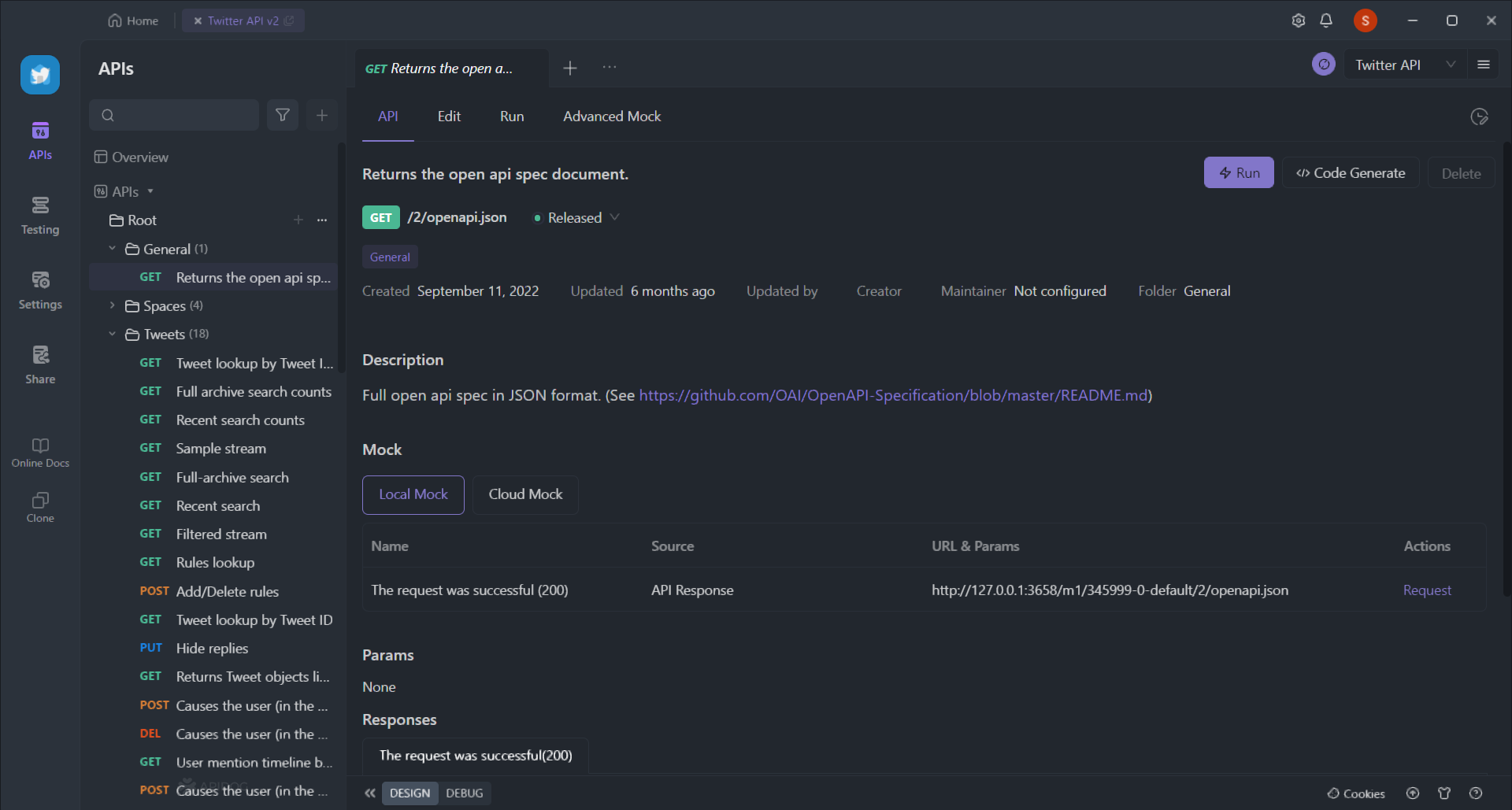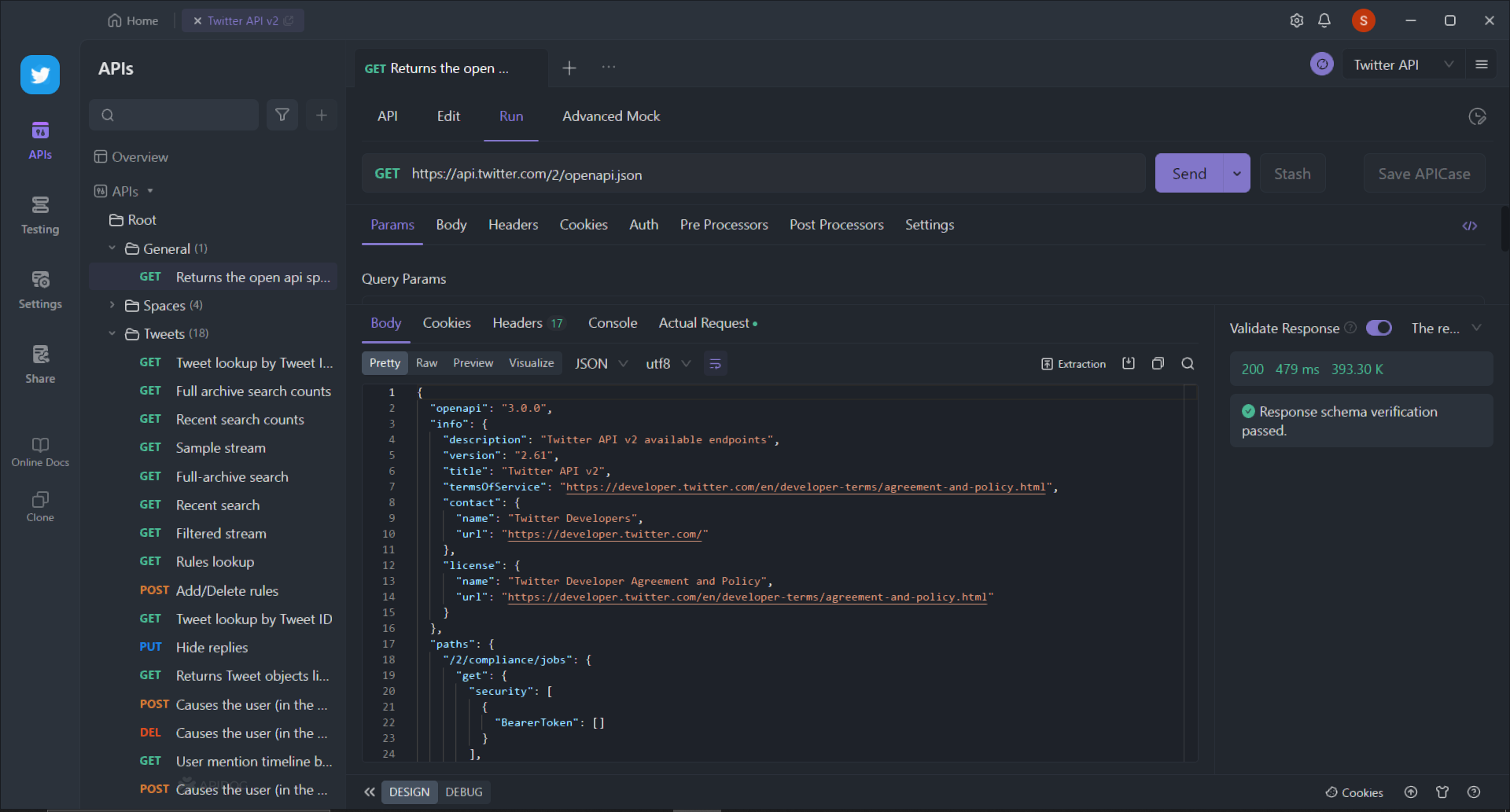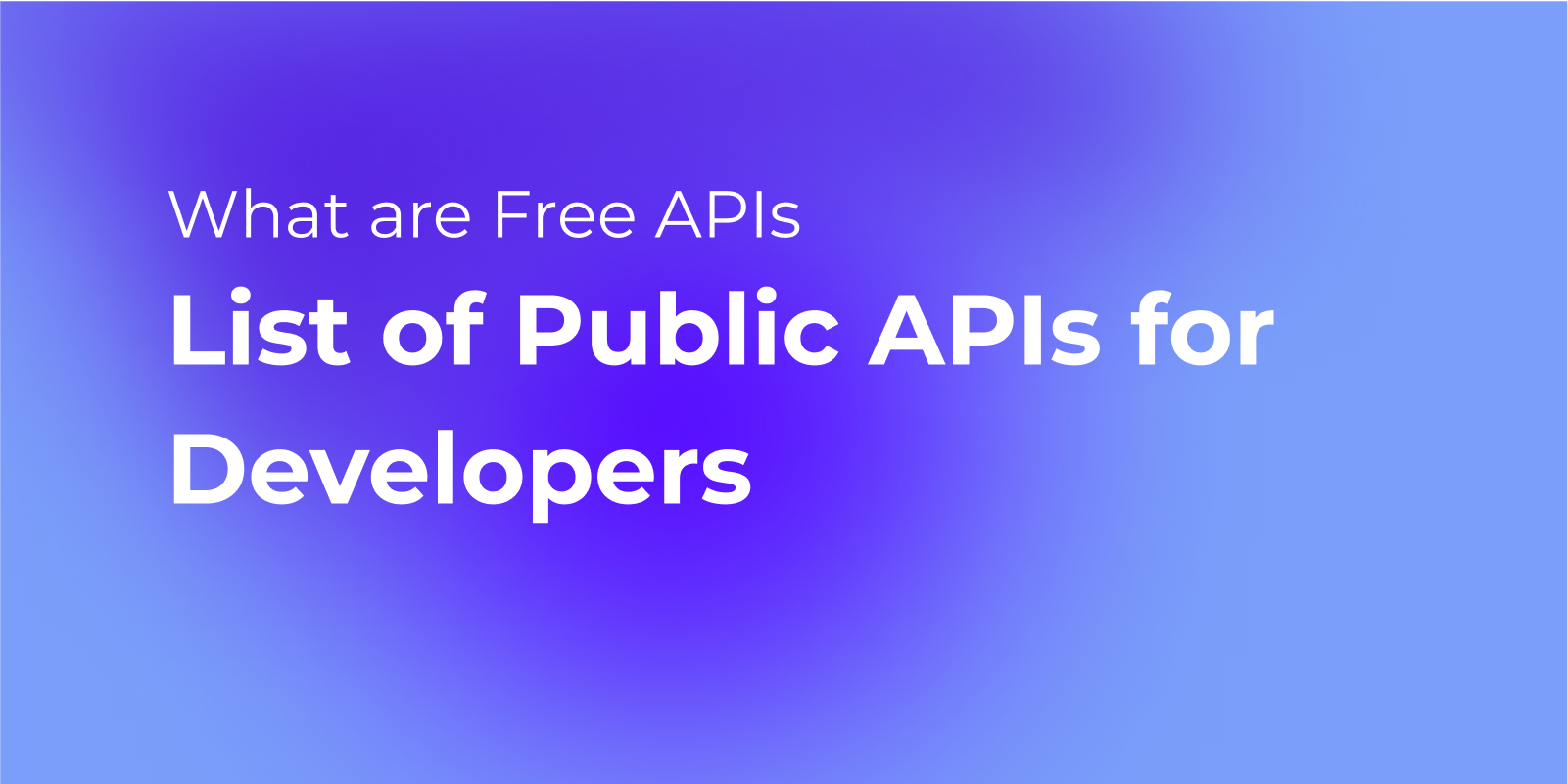Since the demand for features in software applications increased from the users, developers have been trying to incorporate them to the best of their abilities, whether it is a web or a mobile-based application. Fortunately, developers have the best tools to assist them. Application Programming Interfaces (APIs) are one of them.
APIs are software interfaces with a set of protocols, routines, and tools that enable software applications to communicate with each other. It allows developers to integrate different software systems and build applications to access and use data from various sources; an important part of modern software development.
This article will cover Free APIs, how they work, and their benefits for developers. It will then cover an example of how Free APIs can be useful, as they have recently gained popularity.
What is the Purpose of Free APIs?
Free APIs are APIs that are offered to developers at no cost. These APIs are typically made available by companies or organizations that want to encourage developers to use their services or data for their promotion. Free APIs can access various data and services, including weather forecasts, currency exchange rates, social media analytics, and more. Additionally, the useful information obtained from the different data sources via these APIs enables developers to choose more wisely when creating their applications.
How Do Free APIs Work?
Free APIs function similarly to paid APIs, allowing developers to access and use data and functionality from third-party services. However, to keep APIs free for all users, they are usually made available with some limitations or restrictions.
A common restriction on Free APIs is the number of requests that can be made per day or month. The API provider can thus avoid incurring high costs due to excessive usage. Other restrictions may include the need to display attribution or branding for the API provider in the application that uses the API. Despite these constraints, Free APIs can provide a wide range of functionality and be an extremely powerful tool for developers.
Common Lists of Public APIs
There are numerous Free APIs available; some of the most popular are:
Twitter API
It is used to retrieve and analyze Twitter data, as well as to build Twitter conversations. Tweets and replies are made available to developers who use this API to post Tweets. You would have to sign up for the developer's account and would typically request 500K Tweets per month. Still, you couldn't use additional features, such as access to different application environments.
Facebook API
Facebook APIs are used to get data into and out of the platform. For example, developers can gain access to user information, photos and videos, messages, and other Facebook features. Rate limits govern how many API calls can be made in a given period and apply to all API requests. Unfortunately, all calls, not individual API requests, count toward the rate limits.
Spotify API
Spotify Web API lets you retrieve information about music artists, albums, tracks, and podcasts, manage your Spotify library and control audio playback directly from the Spotify Data Catalogue. Furthermore, the API provides a set of endpoints, each with its distinct path.
OpenWeatherMap API
OpenWeatherMap API is one of the most popular APIs that provides access to real-time weather data, a basic tool mostly used in software applications. It provides access to current weather data for any location in over 200,000 cities, forecasts, and weather maps, which allows for 60 calls/minute and 1,000,000 calls/month. It is especially useful when developing map-based interfaces.
NewsAPI
NewsAPI offers access to real-time news articles worldwide. It returns search results for current and historical news articles from over 80,000 global sources, allowing for 100 free daily requests.
However, Free APIs are not only limited to basic use cases. It can also build complex applications integrating multiple data sources and services.
Benefits of Using Free APIs
Since people discovered the examples and their use cases, developers can confidently state that there are numerous benefits. Here are a few examples:
Cost Effective
Free APIs can assist developers in saving significant costs associated with application development. Furthermore, Free APIs enable developers of all sizes and experience levels to build more powerful and feature-rich applications by providing inexpensive access to valuable data and functionality.
Faster Development Time
By allowing developers to access and utilize existing code and functionality, Free APIs can help reduce development time significantly, enabling them to release their applications to market more quickly.
Access to Valuable Data and Insights
Developers can make more educated decisions about creating and optimizing their applications by utilizing Free APIs, offering them useful information and insights. For instance, data on user behavior, market trends, and other pertinent data points can help developers make more effective applications.
Increased Functionality
Developers can use Free APIs to gain access to functionality that would be difficult or expensive to develop in-house. As a result, it can assist developers in creating more sustainable applications, allowing them to provide greater value to increase their customer base.
Community Support
Communities of developers who share a common interest or objective, create and maintain many Free APIs. As a result, it enables developers to access various materials, such as documentation, instructions, and code examples.
Now that you have learned mostly there is to know about Free APIs, their use cases, and their benefits, it's time to see how some examples of Free APIs, like those mentioned above, are presented and can be used.
Defining and Documenting Free APIs Using Apidog
Apidog is an API documentation and testing tool that assists developers in designing, documenting, debugging, testing, and mocking their APIs. It offers a simple and user-friendly interface, making creating and managing APIs easier. Apidog allows developers to create clear and concise API documentation, including information about API endpoints, parameters, and response formats. Moreover, it is available in cloud-based and self-hosted versions and supports various programming languages and API frameworks.
In addition to providing documentation for their APIs, Apidog also makes it easy for developers to share their APIs with the wider development community. Users can publish their APIs on the API Hub platform, after approval from Apidog, where other developers can discover and utilize them. One of the key benefits of using Apidog to define and document Free APIs is that it assists developers in making sure their APIs are concise, clear, and simple to comprehend. It is crucial to properly document APIs so that developers with various levels of training and experience can use them to increase the exposure and promotion of their goods and services.
Streamlining Free APIs Integration Using Apidog’s API Hub
API Hub is a centralized platform in Apidog that allows users to search, discover, and use APIs from a wide range of providers. It offers a simple user interface that enables users to look for APIs according to their requirements, such as API functionality, industry, and data type. In addition, it offers almost 1800 APIs, which can be used for various purposes in your application, listed in the API Hub, such as social platforms like Facebook, Twitter, etc.
When a user locates the desired API, Apidog's API integration tools make incorporating it into their application easier. Additionally, Apidog offers thorough documentation and usage instructions for each API, making it simpler for users to understand and ensuring uniform API usage throughout the application. If the API requires an access key or authentication, you need to generate an API key. Typically, this entails creating an account with the API provider and requesting an API key or token. Once you have an API key, you can use Apidog to send requests to the API to test it. This enables you to test the API endpoints and methods and ensure you are getting the correct response information. Once you have tested the API and are satisfied with its functionality, you can integrate it into your application by writing code that calls the API endpoints and methods and using the API key to authenticate requests.
The best part of using API Hub in Apidog is that it is constantly updated with new APIs, ensuring users can access the most up-to-date APIs. In addition, since API Hub in Apidog streamlines the process of locating, integrating, and managing APIs, users can build reliable and feature-rich applications while saving time and effort.
For example, you can see some of the categories of sample APIs provided under the documentation of Twitter API as follows:

You can see several APIs for varying purposes, like Tweet lookups by Tweet IDs, Hide replies, Filtered streams, etc. For example, one of the Twitter APIs which will return the API specification document of Twitter is as follows:

You can then test the API by clicking the Run button, which would give the desired result in the JSON format as follows:

You can even incorporate any of the APIs from the list of sample APIs provided, into your application. This typically entails integrating the API endpoints and methods into your application's code and authenticating requests.
It's important to note that the Apidog has many features that can assist you in using free APIs if you can use them to their fullest potential. You can even incorporate them into your application based on your unique use case, making it stand out in this competitive market.
How to Create and Publish a Free API Using Apidog
This is an optional section for advanced tech-savvy users and software engineers who wish to deploy their free APIs on APIHub.
You can create your own customized API according to the specific use case for your application using Apidog. Let's see an example of how Apidog can help users design and document a Free API:
Let's say a developer wants to create a Free API that provides access to weather data. The developer can use Apidog to define the API endpoints, parameters, and response formats and then generate documentation to share with other developers. The steps are shown below:
1. Define Your API Endpoints
Define the endpoints your API will tell. It includes endpoints for retrieving, creating, updating, or deleting resources. For instance, the API has endpoints for retrieving the current weather and the weather forecast for that particular location.
2. Set up Your API Parameters
Once you have defined your endpoints, you can define the parameters your API will accept. It includes query parameters, headers, or request bodies. For example, the API requires a location parameter that specifies the location for which weather data should be retrieved.

3. Define Your API Responses
After defining your endpoints and parameters, you can define the responses that your API will return. It includes response codes, response headers, and response bodies. For example, since you have selected JSON, the API will return weather data in JSON format.
4. Add Descriptions and Examples
It is important to add descriptions for each endpoint, parameter, and response to make the API documentation easy for developers to understand. It can include explanations of what each parameter is used for, what each response code means, and examples of how to use your API by clicking on each endpoint, parameter, or response and entering your text in the corresponding fields.

5. Generate Your Documentation
Once you have defined your API endpoints, parameters, and responses and added descriptions and examples, you can generate your documentation by clicking the Save button. Apidog will then generate a clear and concise API documentation page automatically that you can share with the other developers.
After saving the API, you will be able to see the documentation for the weather API as follows:


6. Export Your API Definition
To publish your API, you must first export your API definition in the appropriate format to be published on API Hub. For example, this might entail exporting your API definition in a file format like Swagger or OpenAPI.

You can even tweak the versions to match the desired requirements for publishing your API.
7. Publish Your API on API Hub
Your exported API definition can now finally be published on the API Hub. You can upload your API definition and send it to the API Hub team for review and approval.
You have successfully created a Free Weather API and properly documented it with the help of Apidog. It would have been tiring and tedious if you had done the documentation manually, but with Apidog, it is a walk in the park!
Conclusion
Free APIs offer many benefits to developers, including cost savings, faster development time, access to valuable data and insights, increased functionality, and community support. However, they can also present challenges when defining and documenting their functionality. But with Apidog, developers can define and document their Free APIs quickly and easily. In addition, they have the ability to write concise and understandable documentation for their APIs, making it simple for other developers to comprehend how to use them.
Lastly, Free APIs and tools like Apidog are helping to democratize access to robust data and functionality, enabling developers of all sizes and experience levels to build more powerful and feature-rich applications. In the future, you will see even more innovation in this area as the significance of APIs increases, with new tools and technologies emerging to support the requirements of both developers and businesses.



